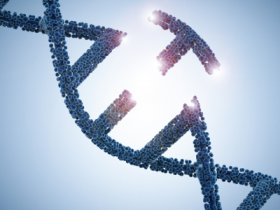The diagnosis and treatment of sinonasal tumors pose significant clinical challenges due to their frequent presentation with nonspecific symptoms, late-stage detection, and involvement of crucial neurovascular structures. Multidisciplinary and global collaborative efforts are required to enhance the quality of evidence for sinonasal tumor diagnosis and treatment. To address this need, a multidisciplinary and international group of experts joined their efforts and developed the International Consensus Statement on Allergy and Rhinology: Sinonasal Tumors (ICSNT), which was published in the International Forum of Allergy & Rhinology (IFAR) in 2024.
In the concluding session of the 2024 American Rhinologic Society (ARS) meeting at the COSM that was held on May 15–16, 2024 in Chicago, a panel of experts presented the ICSNT and discussed how it can help clinicians in their practice. The session was moderated by Edward Kuan, MD, FARS, and the panelists included Daniel Beswick, MD, FARS; Nyall London, MD, FARS; James Palmer, MD, FARS; Timothy Smith, MD, FARS; Shirley Su, MD; Eric Wang, MD, FARS; and Marilen Wang, MD, FARS.
The panelists presented the objectives of the ICSNT and its main features and used examples to illustrate how it can benefit the clinical practice.
They emphasized that the ICSNT was created to improve the access of clinicians to data with high quality and granularity and to aid them in optimizing their practices for the diagnosis and therapy of sinonasal tumors. However, the ICSNT is not intended to serve as a guideline for the practice, but rather to provide recommendations based on the best available evidence. One of the advantages of this resource is its easy accessibility. Clinicians can even download it on their cell phones and quickly refer to it when faced with a diagnostic or therapeutic challenge related to sinonasal tumors.
The ICSNT document is comprehensive. It includes four major sections: general principles, benign neoplasms and lesions, malignant neoplasms, and quality of life and surveillance. Moreover, it encompasses 48 thematic and histopathology-based topics from across the field of sinonasal neoplasms and masses and summarizes the best available evidence. Specific recommendations are provided in the sections with a high degree of evidence, whereas other areas summarize current evidence. Future directions and research opportunities are presented in a final section.
The panelists also emphasized the multidisciplinary approach employed for the development of the ICSNT. It was created by an international team of experts with diverse backgrounds and from different (sub)specialties, including otolaryngologists, rhinologists, head and neck oncologists, neurosurgeons, pathologists, medical and radiation oncologists, and radiologists. The resource is pathology-driven, since the pathological characteristics of sinonasal tumors are critical for their classification, and system pathology plays an important role in therapeutic decisions.
At the end of the session, the Editor in Chief of the IFAR, Timothy L. Smith, MD, FACS, presented key considerations related to the consensus statement approach adopted by the IFAR during the last decade. He highlighted the significance of bringing together a group of multidisciplinary, multi-institutional, and even multinational authors to synthesize current evidence, to infuse it with appropriate expert opinion, and to make appropriate recommendations. The ICSNT exemplifies this consensus approach and its implications for the clinical practice.
The panelists agreed that the ICSNT provides a comprehensive summary of the existing evidence in the field of sinonasal tumors and embodies a multidisciplinary and collaborative model of care in the field. It can benefit the clinical practice by providing physicians with a comprehensive and easily accessible resource, summarizing the best available evidence in the field and including specific recommendations.
Literature source
Kuan EC, Wang EW, Adappa ND, et al. International Consensus Statement on Allergy and Rhinology: Sinonasal Tumors. Int Forum Allergy Rhinol. 2024;14(2):149-608.







